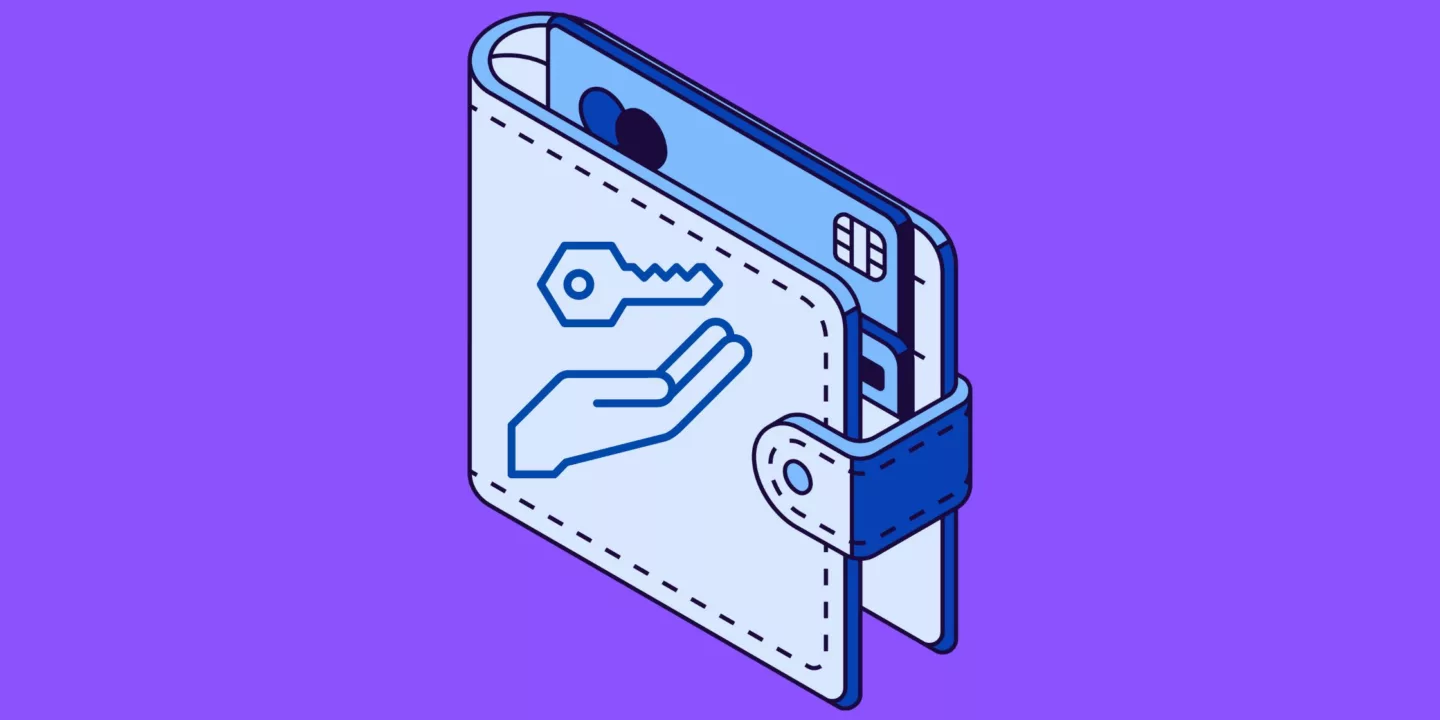
What is Self-Custody in Crypto?
Self-custody in crypto might seem like jargon, but it is crucial for those who want full control over their assets. Self-custody means managing and protecting your private keys while enjoying autonomy and security. Let’s discuss what self-custody means in detail.
Key Takeaways
- What are self-custody wallets?
- Understand the types of self-custody wallets.
- The benefits and risks of using these wallets
Understanding Self-Custody Wallets
A self-custody wallet for crypto is a digital tool that authorizes you to manage and secure your cryptocurrency holdings independently. Unlike custodial wallets, where a third party controls your assets, self-custody wallets enable you to control your private keys completely. These keys are necessary to access and manage your funds. The wallet can be software-based (accessible via mobile or desktop apps) or hardware-based (physical devices). To use it, you generate a private key, store it securely, and use the wallet to send, receive, and track your crypto transactions directly on the blockchain.
Benefits of Self-Custody Wallets
The four key benefits of this wallet are:
- Ownership: With this wallet, you enjoy complete control over your digital assets, giving you full authority and independence in handling your cryptocurrency.
- Security: Since your funds are not stored on unreliable third-party servers, the risk of losing your assets because of exchange breaches or cyberattacks is reduced.
- Privacy: Managing your own assets eliminates the risk of identity theft or data leaks since you avoid sharing personal information with exchanges or custodial services.
- Decentralization: Self-custody aligns with the principles of decentralization and lets you fully engage with decentralized finance (DeFi) and blockchain services. You can participate in various blockchain activities without relying on centralized platforms.
Types of Self-Custody Wallets
Self-custody wallets are of the following three types:
Software Wallets
It is an app that helps you store private keys and access the blockchain for transactions. With it, you can send, receive, and monitor your cryptocurrency balances in real-time on mobile or desktop devices. Software wallets are easy to use and usually free, but they need an internet connection and are exposed to online risks.
Hardware Wallets
They are hardware devices that keep private keys offline for enhanced security. You connect them to your desktop or mobile device via USB or Bluetooth only when performing a transaction. This offline storage makes them more resistant to hacking.
Paper Wallets
They are physical documents with private keys and QR codes for cryptocurrency access. They offer an offline and cost-effective storage option to protect you from online hacking. However, they need to be kept safe from physical theft or damage. You can create paper wallets using special software and print them for secure storage.
READ ALSO: Understanding Custodial and Non-Custodial Wallets: A Complete Comparison
Common Challenges of Self-Custody Wallets
Self-custody wallets have a fair share of challenges and risks; here are some.
- Responsibility: Given full responsibility for securing your digital assets, any lapses in your security practices can directly impact them.
- Loss of Access: A significant risk in self-custody is the potential loss of your seed phrase or private keys. If you lose them or they are stolen, you could permanently lose access to your funds, as no recovery option is available.
- Complexity: Self-custody options can be difficult for new crypto users. They must learn to manage private keys, set up wallets accurately, and protect themselves against various security issues.
Best Practices for Self-Custody Wallets
You can effectively use self-custody wallets by implementing the following practices.
Seed Phrase Management
A seed phrase is a set of words with all the information required to restore a Bitcoin wallet. Keep this phrase secure, note it down, and store it safely. Avoid storing it digitally or sharing it with others.
Using Hardware Wallets
A hardware wallet is a physical gadget that securely stores your private keys away from online dangers. By keeping your keys offline, it shields them from cyber threats. Trezor and Ledger are popular hardware wallets.
Asset Segregation
This approach involves using separate wallets for different types of assets, such as one wallet for Bitcoin and another for Ethereum. By doing so, if one wallet is compromised, your other assets remain protected.
Beware of Fraud
Phishing is a fraudulent method by hackers to steal your wallet information. They may send you emails or messages acting as a trusted source. Constantly scrutinize the source before sharing any information.
How to Choose a Self-Custody Wallet?
Here’s the key consideration for choosing a self-custody wallet:
- Security Features: Choose a wallet with security features such as encryption, two-factor authentication, and biometric access. These tools add extra protection, making it more difficult for hackers to reach your assets.
- Private Key Control: Ensure the wallet gives you complete control over your private keys. This is fundamental to self-custody, ensuring that only you can access your funds, not any third-party provider.
- Open Source Software: Consider open source wallets, which allow the community to review and audit the code. This transparency helps identify vulnerabilities and build trust in the wallet’s security.
- Backup and Recovery Options: Choose a wallet with robust backup and recovery options, such as a seed phrase or mnemonic key. This will allow you to return access to your funds if you ever lose your wallet.
- Multi-Signature Support: Look for wallets that support multi-signature features. Multi-signature requires more than one private key to approve a transaction, adding an extra level of security to prevent unauthorized access.
Step Guide to Setting up a Self-custody Wallet
By taking the following steps, you can begin transacting through self-custody wallets:
Step 1: Choose a Self-Custody Wallet
Select a reputable self-custody wallet like Trust Wallet, MetaMask, or Ledger. These wallets give you complete control over your private keys, ensuring only you can access your funds.
Step 2: Download and Install the Wallet
- Mobile Wallets: Go to the App Store (iOS) or Google Play Store (Android) and search for your chosen wallet (e.g., Trust Wallet). Download and install the app.
- Desktop Wallets: Visit the wallet provider’s official website and install the version suitable for your operating system. Next, follow the instructions provided to install the wallet.
Step 3: Create a New Wallet
- Launch the wallet app or software.
- Pick the option to set up a new wallet.
- The wallet will create a seed phrase (typically 12-24 words).
- You may be asked to re-enter the seed phrase to confirm you’ve written it down correctly.
Step 4: Secure Your Wallet
Set a strong, complex password for your wallet. If available, activate 2FA for an extra security layer.
Step 5: Receive Cryptocurrency
- Find your wallet’s public address (a long string of letters and numbers). This is the address you will use to receive funds.
- Copy the address to your clipboard.
Step 6: Transfer Assets to Your Wallet
- Log in to your account if your assets are on an exchange like Coinbase.
- Navigate to the withdrawal section of the exchange.
- Enter your wallet address in the recipient box.
- Select the amount of cryptocurrency you wish to send.
- Please double-check the details and confirm the transaction. You may need to input a verification code sent to your email or mobile.
Step 7: Verify the Transfer
Open your self-custody wallet and check the wallet balance to confirm the funds have arrived. Depending on the network, the transaction may take a few minutes to several hours.
Conclusion
Self-custody in crypto offers seasoned investors greater control, security, and privacy over their digital assets. While these wallets come with their own challenges, implementing best practices and staying educated can help you navigate these risks effectively.
Now that you know how to trade using a self-custody wallet, download the Mudrex app and start your journey today.
Frequently Asked Questions
How does a self-custody wallet work?
A self-custody crypto wallet is an application that lets you store, manage, and trade cryptocurrencies without relying on intermediaries. It generates a private key and grants access to your digital assets on the blockchain. This private key works alongside a public key to ensure secure transactions only you can authorize.
Should I self-custody my crypto?
Taking control of your crypto assets lowers counterparty risk and enhances security. However, it requires a solid understanding of the technology and confidence in asset management. Besides, losing private keys can result in the irreversible loss of funds.
What are the main benefits of self-custody?
Self-custody crypto wallets offer complete control over private keys, improved security, reduced counterparty risk, and entire financial independence.
What is the difference between a self-custody wallet and an exchange?
A self-custody wallet gives you complete control over your private keys, while an exchange holds them and manages assets on your behalf.
What are the best practices for securing a self-custody wallet?
To secure a self-custody wallet, use strong passwords, enable two-factor authentication, back up private keys offline, and store backups in a safe location.





